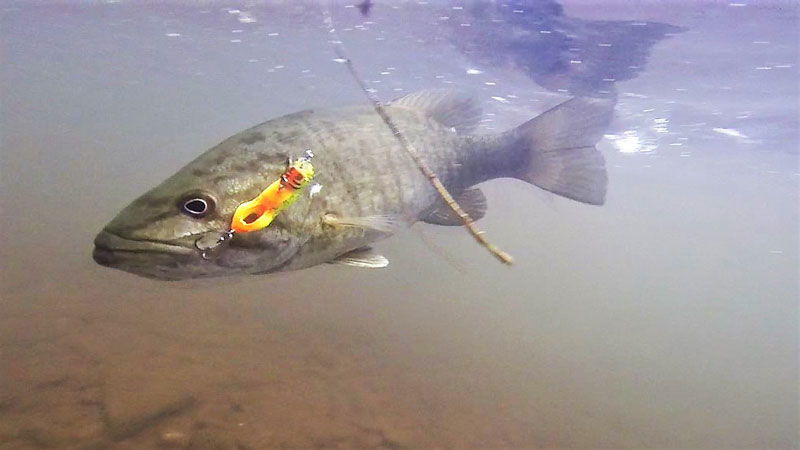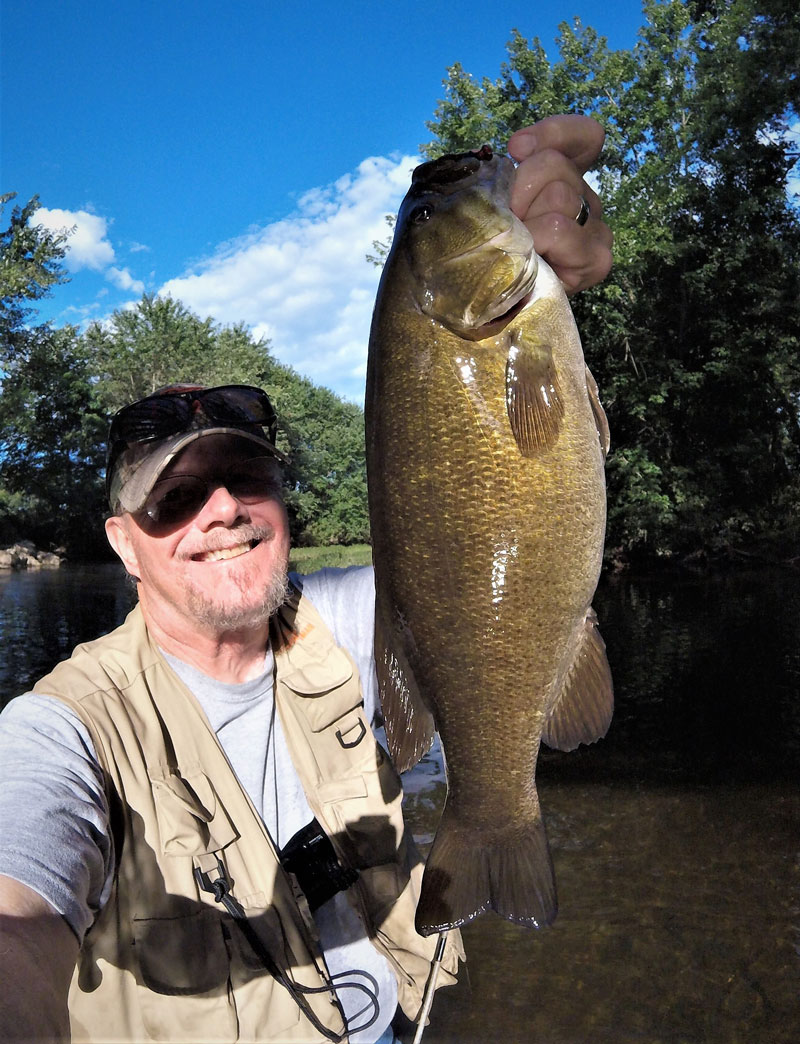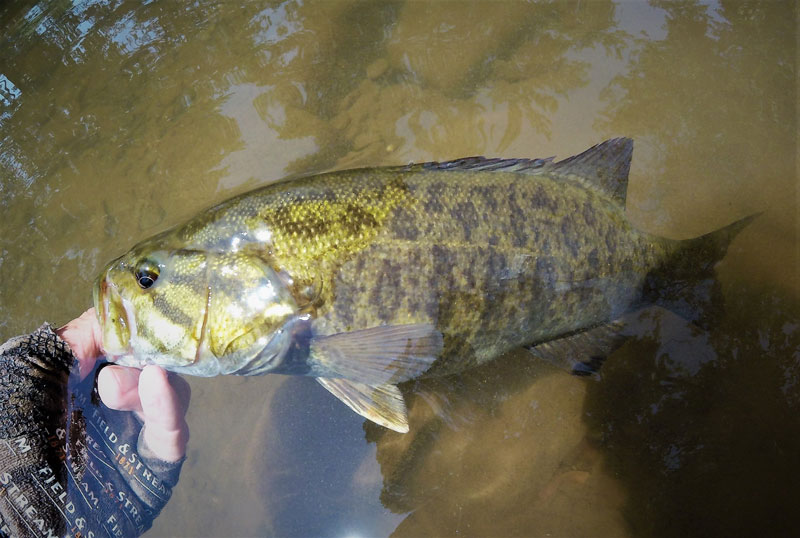Since I was a child growing up one of my favorite ways to fish was hopping into a local stream in quest for swift-water smallmouth bass, and years later I would own a car, and rivers such as the Potomac were within my grasp. The fish would often be bigger and stronger than the creek fish, and over the years, certain lures and lure types emerges as must-haves for each and every smallmouth trip. Some of my old standbys are still producing to this day while others seem to come and go. So, here is a rundown of what has consistently taken the most, and often the biggest, smallmouth bass in my favorite creeks and rivers.

Hair Jigs
If I had to pick a day-in, day-out family of lures that routinely catches both numbers and quality-sized smallies from moving water environs, it would have to be hair jigs. Most smallmouth experts tout hair jigs as a cold-water standard, but the truth is that hair jigs, small or large, will take riverine bass year-round. Odd that the early winter and colder periods are heralded as prime hair jig months, as these lures most often replicate crayfish – a prime forage for river bass. However, during the coldest times when these lures are most successful, crayfish are literally a no-show in the streams due to hibernation. The jigs trigger strikes from lethargic fish, but even more so, they tempt smallies during the warmer months.
Materials for these lures vary, but most are tied with either bucktail or craft fur. Both have their strong points. Bucktail is hollow and can make a lighter jig head, say 1/16th of an ounce, fall at a slower rate than if the same jig were tied with craft fur, which tends to show more movement in the water. Most hair jigs are tied by companies specializing in jig tying and there are professional tiers in the industry who key specifically on smallmouth jigs. The web is loaded with experts who can tie outstanding jigs to replicate both crayfish and minnow forage patterns that can smash stream and river smallmouths. Then again, some anglers tie their own, as I have done for over 30 years. It’s always a kick to catch a good fish on one of your own creations.
Alternatively, many anglers opt for the tube jigs and fish them rather than (the more expensive) hair varieties. Many companies make tube jigs that will accommodate jig heads from size 1/32 to a quarter ounce. Most smallmouth anglers fish an eight-ounce jig head and three-inch tube as a standard for river bass, with colors including black, brown, pumpkin, olive, and root beer patterns catching fish throughout the seasons. Often, tube jigs are infused with various scent options to attract bass, and others are made from a softer plastic to heighten their movement underwater. Again, any quick review of a tackle shop’s shelves will reveal a huge variety of tube sizes and color options appropriate for smallmouth bass.

Crankbaits
One need look no further than the classic minnow designs of Rapala to see a host of minnow-like crankbaits that will take river smallmouths. The floating gold and silver two-inch Rapalas have been standards for stream bass angler for many decades and they take their share of other gamesters as well. The count-down series is ideal for those long, deep pools that require a sinking lure, but not one that will plummet quickly to the bottom. Color patterns vary, but most of the blue-back and black-back designs will closely imitate fleeing baitfish and minnow forage in the flows. When you see minnows skipping across the surface in an attempt to evade capture, it’s time to tie on the floating Rapalas.
Another time-honored crankbait is the Rebel Crayfish and Teeny Crayfish. When they first arrived on the scene more than 30 years ago, stream bass and sunfish went ape over these quivering duplicates of crayfish. Still today, they remain one of the most effective warm-water lures for river-dwelling gamefish of all species. Don’t be surprised if you get a smashing strike as soon as the lure lands on the water, so be ready to set the hook if your lure disappears in a swirling boil.
Sometimes a round dynamic can give a better show of baitfish profiles. The Mini series of Bagley and Berkley crankbaits tune in nicely with stream sunfish species that are often the dominant forage of larger stream and river bass. They tend to run slightly deeper than the Rebel lures and can adapt well to larger river systems such as the Potomac or Susquehanna.
One of my recent favorites has been the Nano Series of crank baits by Matzuo. Both the Nano Minnow and the Kinchou Minnow in 1/8th ounce travel at 2 to 4 feet at varying retrieves and can coax smallmouths, largemouths and big channel catfish from rivers and streams. Also, they can be very effective on stream trout once the PowerBait crowd has taken the summer off. We like to toss them on quality 6-pound monofilament like Suffix or P-Line FlouroClear.
Soft Plastic Lures
Although not a traditional topic with river bass men, there is a strong case to be made for plastic worms in the flows. Almost by accident, I discovered that smaller three- to 4.5-inch stick and ring worm options can be an absolute killer on smallies. Once, while fishing a section of the Monocacy River in central Maryland, I ran out of my favorite hair jigs as the rocky bottom just ate them up. In an effort to keep off the bottom yet still appeal to the bass, I put on a small, no-name stick bait and fished it wacky-rigged on a 1/0 offset worm hook. Nothing special, no secret retrieve, but almost as soon as the light plastic worm began to disappear those river bass came alive and pounced on it. I was somewhat surprised as to the aggressiveness of the fish and they quickly tore the worm in half. Fortunately, I had a bag of them in my vest. Ten bass later, I was sold on the fact that stick worms can be a game-changer when other more traditional baits just aren’t doing it. We have had good success with the classic Yamamoto Senko, Stank X Stix and the Creepy Hollow Mini Dead Sticks in various colors from black, brown, blue, auburn and olive.

Other plastic options such as the classic four-inch Fin-S-Fish or the Zoom Finesse four-inch Worm team nicely with either a 1/0 or a 2/0 offset Owner or Gamakatzu worm hook. We like to fish them on light spinning tackle with either six- or eight-pound quality monofilament lines. A lightweight six-foot spinning stick serves well for enjoying 10- to 14-inch smallmouths yet has enough spunk to handle the occasional three- to four-pound bass that might be the season’s best. For smaller tributary streams, standard ultra-light spinning gear and four-pound lines will handle 95-percent of the fish you hook, save for that raging, eight-pound channel catfish you might…might… might… hook when you least expect it!
-By Jim Gronaw